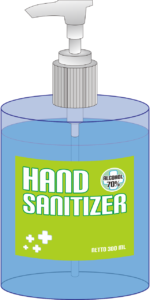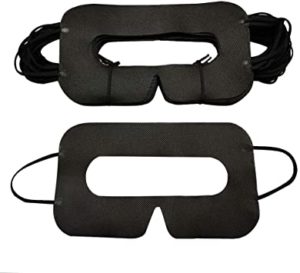VR and COVID-19:
A short guide to cleaning and sanitizing your VR headsets
Sanitization processes are one of the trend topics in the post-COVID-19 world, and one of the most urgent issue for every organization who is willing to use VR as an educational tool. Students are supposed to share the same equipment during a VR-based lesson: their safety must be obviously guaranteed, but how?
Here are some good practices that can be easily implemented.
1) Wash hands and face
- The first thing to do is to wash hands and face before and after using a VR headset, as this practice is proven to be the most effective in inactivating germs, bacteria and viruses;
- if there is no access to a sink or soap, it could be useful to have a hand sanitizer in the room where VR is going to be used. This will help keep headset and controllers safe and clean, and it will reduce the chance of spreading germs from people who enter and leave the room

2) Disinfectant wipes: alcoholic or not?
- Both headsets and controllers must be wiped down before and after being used;
- Lens must not be cleaned up with disinfectant wipes, as doing so can result in permanent damage. Lens can be cleaned up using microfiber cloths;
- Ethanol-based detergents appear to be most effective against viruses (including COVID-19) and are usually readily available (Gold & Avya, 2020), but their use can damage the material of the headset and controllers, dissolving certain plastics, making plastic less flexible or discoloring it;
- On the contrary, alcohol-free disinfectant wipes (with benzalkonium chloride) do not damage any part of VR headset, but it is not proven to be as effective as ethanol-based detergents: benzalkonium chloride products were ineffective in inactivating human coronavirus (Wood & Paine, 1998);
- In conclusion, a choice has to be made, when choosing wipes as a disinfection method: potentially damaging the headsets in the long term, or protecting them, without being 100% sure that headsets are sanitized.
3) UVC Disinfectant appliance
UVC (ultraviolet C) is a form of electromagnetic radiation in the range of 200-280 nm that can prevent bacteria, viruses, and other microbes to replicate, by penetrating their cells and disrupting the structure of the DNA molecules.
This technology has been used since many years to disinfect drinking water and food, but now it has become available for VR.
- UVC light seems like the safest (99.9% effectiveness) and easiest way of decontaminating headsets and controllers in a very short time (approx. 1 minute);
- UVC light do not cause any damage to VR headset, but it is very damaging to skin and eyes, so caution is needed during the decontamination process;
- The backlash is that a decontamination box can be a costly investment.
4) Cleanable and disposable VR face masks
- VR headsets’ face pads are not waterproof: it is better to replace them with waterproof ones, because they can be easily sanitized, thus being safer to use;
- using a cotton cover is not recommended, because moisture can seep through; the cover must be washed after each use with hot water and detergent;
- disposable face pads can be used as another layer of protection, but they are affected by the same problem as cotton covers (i.e. moisture), so they are effective against dirt, such as make-up;
- If cotton cover or disposable face pads are used, make sure to decontaminate underneath them after every use.
5) VR Hygiene Procedure Signs
- Write down an infographic to provide a step-by-step guide for VR hygiene procedure: by doing so, everyone will be informed about how to behave properly, in order to keep VR headsets clean and avoid the spread of Covid-19 (an example here: https://vrschoolresearch.files.wordpress.com/2020/08/be-vr-safe-2020-final-1.png).
Bibliography
Gold & Avya, 2020 – retrieved from: https://www.ncbi.nlm.nih.gov/books/NBK513254/
Wood & Paine, 1998 – retrieved from: https://www.journalofhospitalinfection.com/article/S0195-6701(98)90077-9/pdf


